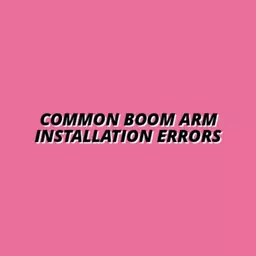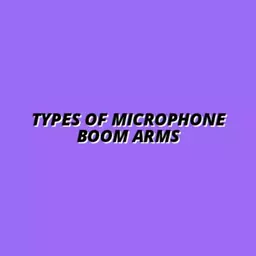In the world of audio production, the layout of your workspace is not just a minor detail; it’s a fundamental aspect that can dramatically influence sound quality. With the right setup, you'll discover clarity and precision in your audio that you never thought possible. Are you ready to transform your listening environment?
What You Will Learn
- An optimized audio desk layout enhances sound clarity and improves the overall listening experience.
- Key factors such as speaker placement, monitor height, and cable organization directly influence sound quality.
- Understanding your specific listening environment (home studio, work-from-home, or streaming) is crucial for effective audio desk optimization.
- Ergonomics play a vital role in audio desk design, promoting comfort and productivity during extended use.
- Experimentation with speaker positioning and desk materials can lead to significant improvements in sound quality.
- Investing in acoustic treatments and high-quality audio gear can elevate your audio experience.
- Engaging with the audio community and sharing experiences can provide valuable insights and foster creativity.
Key Takeaways for Audio Desk Layout Optimization
Essential best practices for speaker placement and desk setup to enhance your audio quality.
Speaker Placement
- Position speakers at ear level for clarity.
- Ensure speakers form an equilateral triangle with the listening position.
- Maintain a distance of 3 to 6 feet between speakers.
Desk Setup
- Use acoustic panels to reduce reflections.
- Organize cables to minimize clutter and enhance acoustics.
- Position your monitor at eye level to reduce neck strain.
Understanding the Importance of an Optimized Audio Desk Layout
When it comes to achieving great sound quality, the layout of your audio desk plays a crucial role. An optimized audio desk layout can significantly improve the sound clarity and overall listening experience in your near-field monitoring environment. At Tidy Audio Desk, we understand that a well-arranged workspace can make all the difference in how you hear your audio, whether for music production, streaming, or podcasting.
For instance, think about how your speakers, microphone, and desk configuration interact with each other. A cluttered or poorly arranged desk can lead to uneven sound distribution, causing certain frequencies to be muddy or overly bright. So, ensuring your audio gear is placed thoughtfully is essential for sound accuracy!
To ensure your audio sounds its best, consider implementing simple cable routing to keep your workspace tidy and free of interference, which can have a noticeable impact on audio quality.
Why Your Audio Desk Matters for Sound Quality
The arrangement of your audio desk affects not just the aesthetics but also the sound quality. A clean and organized desk helps to minimize distractions and allows you to focus on your sound. Achieving optimal audio quality involves considering factors like speaker placement, monitor height, and the distance between your gear.
- Ensure your speakers are positioned at ear level.
- Maintain a distance of about 3 to 6 feet between speakers.
- Keep cables organized to avoid interference.
All these factors contribute to a listening environment that promotes clarity and detail. Your audio desk truly sets the stage for the sound experience you create, so investing time in its layout can pay off in quality!
Identifying Your Listening Environment
Different setups, such as home studios or work-from-home environments, have unique needs for audio desk optimization. For home studios, the focus might be on sound treatment and speaker placement, while a work-from-home setup may prioritize comfort and ergonomics.
- Home Studios: Consider acoustic treatments and speaker positioning.
- Work-from-Home: Focus on ergonomics and minimizing distractions.
- Streaming Spaces: Ensure visibility of the microphone and camera along with sound optimization.
Identifying your specific listening environment helps tailor your audio desk layout to meet your needs. By understanding your unique setup, you can create a space that enhances both your productivity and audio quality.
Ergonomics in Audio Desk Design
Prolonged use of your audio setup can lead to discomfort if ergonomics are overlooked. An ergonomic audio desk design prioritizes your physical comfort, making it easier to work for longer periods without strain. This is especially important when you're focused on creating great content for your audience!
💡 Planning an echo-free audio desk? Start with desk setup inspiration and acoustic routing. 👉 Explore the Setup Ideas Guide
- Ensure your chair height allows your arms to rest comfortably on the desk.
- Position your monitor at eye level to reduce neck strain.
- Keep frequently used equipment within easy reach to avoid unnecessary stretching.
By incorporating ergonomic principles into your audio desk design, you not only improve comfort but also enhance your workflow. Remember, a comfortable creator is a productive creator!
Pro Tip
Did you know? The placement of your audio monitors can dramatically affect sound quality. For the best results, position your monitors at an angle of about 30 degrees towards your listening position. This "toe-in" technique helps to create a more focused soundstage and reduces unwanted reflections from nearby surfaces.
Summarizing Key Takeaways for Audio Desk Layout Optimization
Optimizing your audio desk layout is crucial for achieving high-quality sound. Let’s recap some of the best practices we've discussed for both speaker placement and desk setup. First, ensure your speakers form an equilateral triangle with your listening position to create a balanced soundstage. Next, consider the materials of your desk; materials like wood can enhance sound quality, while glass might reflect sound adversely. Don’t forget about acoustic treatments—these can transform your workspace into a more professional environment!
Here’s a quick checklist to keep in mind as you optimize your setup:
- Position speakers at ear level for clarity.
- Use acoustic panels to reduce reflections.
- Organize cables to minimize clutter and enhance acoustics.
- Experiment with speaker toe-in angles for better sound focus.
Encouragement to Experiment and Explore Upgrades
As you dive into optimizing your audio desk layout, I encourage you to approach it as a fun experiment! Everyone's listening environment is unique, and small adjustments can yield significant results. Try moving your speakers around or adjusting their height—document your findings to figure out what works best for you.
Before diving into upgrades, consider consulting simple desk cable management tips to maximize your current setup's potential.
Also, think about potential upgrades that could enhance your setup. For example:
- Investing in high-quality speaker stands for better sound dispersion.
- Exploring acoustic treatments tailored to your specific environment.
- Upgrading your audio interface for improved sound quality.
Engaging with the Audio Community
Inviting Feedback and Shared Experiences
Now that you have some solid strategies under your belt, I’d love to hear from you! Share your audio desk setups and any experiences you've had while optimizing your environment. Have you discovered a clever way to conceal cables or a perfect speaker position? The audio community thrives on shared knowledge, and your insights could help someone else transform their workspace!
Call to Action for Further Learning
If you’re eager to learn more, I encourage you to check out additional resources that dive deeper into audio desk optimization. At Tidy Audio Desk, we’re committed to sharing valuable insights and expert tips. You might even consider consulting with a professional for personalized guidance tailored to your unique setup!
Considering top cable management tools can significantly improve your setup and workflow.
Exploring Professional Audio Gear for Enhanced Performance
Finally, let’s talk about gear! Investing in professional audio equipment can take your setup to the next level. Think about upgrading to a more advanced microphone or audio interface—these enhancements can significantly improve the quality of your recordings or broadcasts. Remember, better gear often leads to better sound, making your investment worthwhile!
Ready to elevate your audio experience? Let’s get started on optimizing that workspace today!
Recap of Key Points
Here is a quick recap of the important points discussed in the article:
- Optimize your audio desk layout to improve sound clarity and overall listening experience.
- Position speakers at ear level and maintain a distance of 3 to 6 feet for optimal sound distribution.
- Consider the specifics of your listening environment—home studio, work-from-home, or streaming space—and tailor your setup accordingly.
- Incorporate ergonomic principles to enhance comfort and productivity during long sessions.
- Utilize acoustic treatments and organize cables to minimize sound reflections and clutter.
- Experiment with speaker placement and upgrades to find the best configuration for your unique setup.









